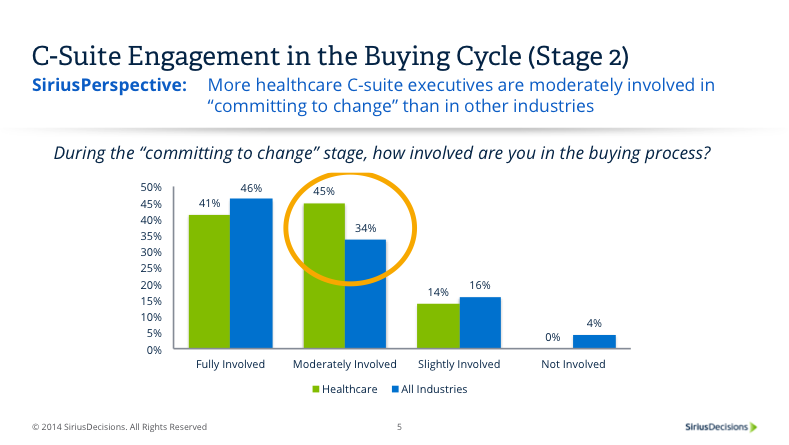Healthcare C-Suite: Barrier or Hidden Champion?
The savvy B2B healthcare marketer must understand how to influence the C-suite decision maker at critical stages in the buying cycle.
Consistent refrains among SiriusDecisions clients (including healthcare organizations, as well as those that sell products and services to healthcare organizations) are:
- We need to figure out how to influence the CXO…
- The C-suite controls the purchase decision…
- We’re seeing the rise in importance of the CXO on our buying process…
Unfortunately, what generally follows these phrases is something akin to:
- But we don’t know how to do that.
- But we don’t have a relationship at that level.
- But we need to revamp our marketing to reflect that.
Addressing this challenge requires intimate knowledge of the buying cycle for your product or service, as well as the ability to ferret out the specific role that the C-suite executive plays within the buying cycle.
Leveraging the SiriusDecisions Buying Cycle Framework (below) can be a fruitful approach for dissecting the various stages of the B2B buying process. It also gives marketers the ability to identify the buying process champion, influencers and other key stakeholders at various stages, as well as devise strategies to pull key decisionmakers along the buying process.

Our healthcare clients tell us that it’s not unusual for a C-suite executive to come in and out of the buying process, complicating B2B marketers’ ability to influence. Based on the results of the 2013 SiriusDecisions C-Suite Persona Study, we see that this is especially the case in stage two (committing to change) for healthcare executives. During this stage, C-suite decisionmakers in healthcare have a greater tendency to be moderately involved than their peers in other industries.

Armed with this knowledge, the savvy B2B healthcare marketer must probe further to understand how to influence the C-suite decisionmaker at this critical stage. For example, our study indicated that healthcare executives accept a meeting with a vendor only if recommended by a direct report.
Although this data is illustrative (we recommend conducting research within a healthcare organization’s own target market), the findings substantiate the importance of understanding the buying cycle and a C-suite executive’s role in it. With appropriate messaging, the right tactics have a greater chance of helping sales colleagues get in the room with the CXO, providing the opportunity to turn this critical executive from a barrier into a powerful champion.